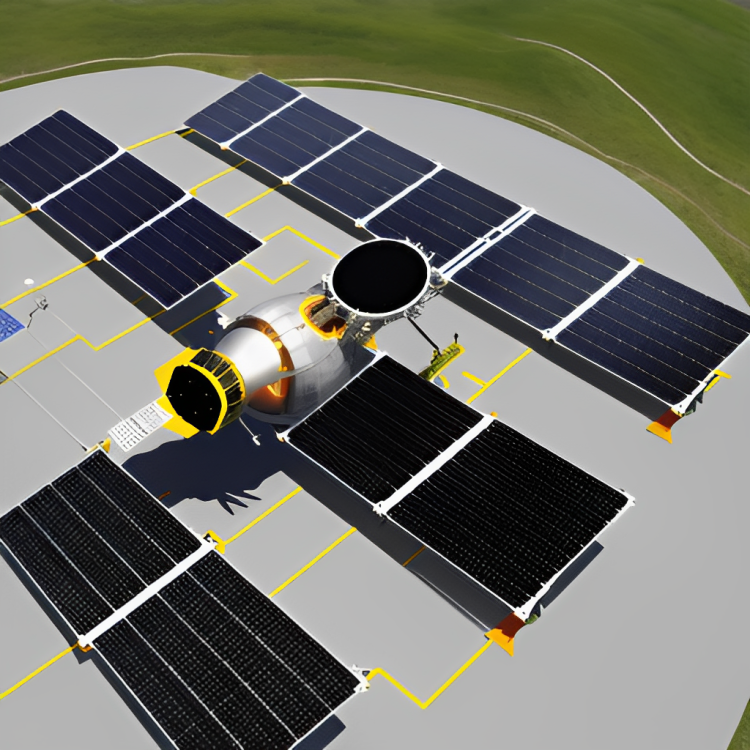Introduction
As the world grapples with the challenges of meeting energy demands while mollifying the goods of climate change, innovative results are demanded. Space-predicated solar power is a slice-edge generality that holds the implicit to revise the way we harness energy from the sun. In this composition, we will explore the generality of space-predicated solar power, its benefits, and the challenges it presents as an energy result from over.
Table of Contents
What’s Space-predicated Solar Power?
Space- predicated solar power involves the wharf sun in space using solar panels and transmitting the collected energy to Earth. The energy is beamed down via a microwave oven roaster or shaft to enter stations on the earth’s face. This approach eliminates the limitations posed by downfall conditions and the Earth’s atmosphere, icing a harmonious and abundant force of clean energy.
The Advantages of Space-Grounded Solar Power
Space-predicated solar power offers several compelling advantages
1. Continuous Energy Generation
Unlike ground-predicated solar arrays that are affected by day-night cycles and downfall conditions, space-predicated solar power systems can induce energy continuously as they circumvent the Earth. This continued energy generation makes it an ideal result for meeting our ever-growing energy conditions.
2. Energy Independence
With space-predicated solar power, countries can reduce their reliance on reactionary powers and attain an advanced position of energy independence. By employing the nearly bottomless energy of the sun, nations can diversify their energy sources and reduce their vulnerability to oscillations in oil painting oil and gas prices.
3. Reduced Greenhouse Gas Emigration
By shifting to clean solar energy, we can significantly reduce hothouse gas emigrations and combat climate change. The burning of reactionary powers for electricity generation is a major contributor to hothouse gas emigrations, and transitioning to space-predicated solar power can help us make significant strides in reducing our carbon footprint.
4. Global Vacuity
One of the most significant advantages of space-predicated solar power is its capability to be transmitted to any position on Earth. Remote and underdeveloped regions that may warrant access to conventional power grids can benefit from this global vacuity. Space-predicated solar power has the implicit to bring clean energy to indeed the most remote corners of the world, contributing to lower global energy equity.
5. Low Environmental Impact
Space-predicated solar power stations have a minimal environmental footprint compared to traditional power shops. Unlike arch-conservative energy power shops, which emit pollutants and contribute to air and water pollution, space-predicated solar power doesn’t produce dangerous derivatives. It’s a truly sustainable and environmentally friendly energy result.
The Challenges and Limitations
While space- predicated solar power holds great pledge, it also faces several challenges
1. Cost and structure
The original cost of planting solar power stations in space and erecting the necessary structure on Earth can be substantial. The development of the demanded technology, as well as the construction of the entering stations, will bear significant financial investment.
2. Space Debris and Safety enterprises
icing the safety of the transmission process and mollifying the trouble of space debris colliding with solar panels are critical challenges. Space debris, analogous to defunct satellites and fragments from former space operations, poses trouble to the integrity of space- predicated solar power systems.
3. Energy Transmission Efficiency
Efficiently transmitting energy from space to Earth without significant losses remains a technological chain. The beaming of energy from space to Earth requires largely effective systems to ensure that the energy reaches its intended destination with minimum destruction.
Conclusion
Efficiently transmitting energy from space to Earth without significant losses remains a technological chain. The beaming of energy from space to Earth requires largely effective systems to ensure that the energy reaches its intended destination with minimum destruction.
FAQ’s
Is space-predicated solar power a realizable result for our energy conditions?
Space-predicated solar power shows a great pledge as a clean and continuous energy result, though it still faces technological and cost challenges. With further disquisition and development, it has the implicit to revise our approach to energy generation.
How does space-predicated solar power differ from ground-predicated solar arrays?
Space-predicated solar power systems route above the Earth, landing the sun without being hindered by downfall conditions or day-night cycles. This continued exposure to the sun enables them to induce energy continuously.
What are the advantages of space-predicated solar power over traditional power shops?
Space-predicated solar power offers numerous advantages over traditional power shops. It provides continuous energy generation, reduced hothouse gas emigrations, and global vacuity to clean energy. also, it has a minimal environmental impact, as it doesn’t produce dangerous pollutants.
What are the safety considerations for space-predicated energy transmission?
icing the safety of the energy transmission process and guarding against space debris collisions are essential factors in space- predicated solar power. Advanced safety protocols and technologies will be vital to icing the reliable and secure transmission of energy from space to Earth.
How can space- predicated solar power contribute to combating climate change?
By shifting to clean solar energy, space- predicated solar power can significantly reduce hothouse gas emigrations, helping to palliate climate change. The deportation of reactionary powers to renewable energy sources is vital in our sweat to combat the adverse goods of global warming.
Related
Satellite Megaconstellations: Pioneering a Connected Future Beyond Boundaries
Space Tourism: A New Frontier for Travel
The Role of Artificial Intelligence in Space Exploration: A New Frontier of Possibilities
https://en.wikipedia.org/wiki/Space-based_solar_power
https://ntrs.nasa.gov/api/citations/20140003205/downloads/20140003205.pdf

